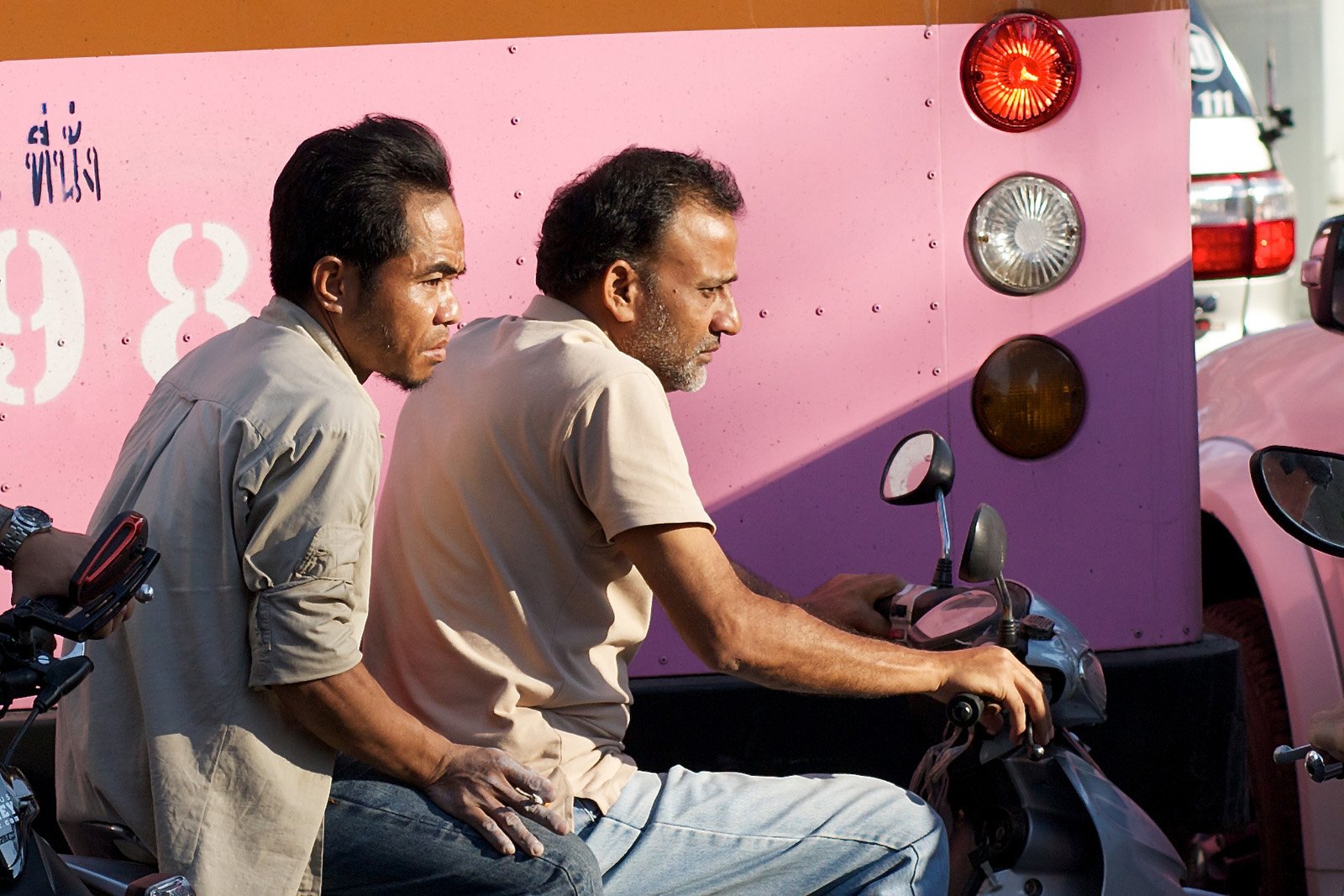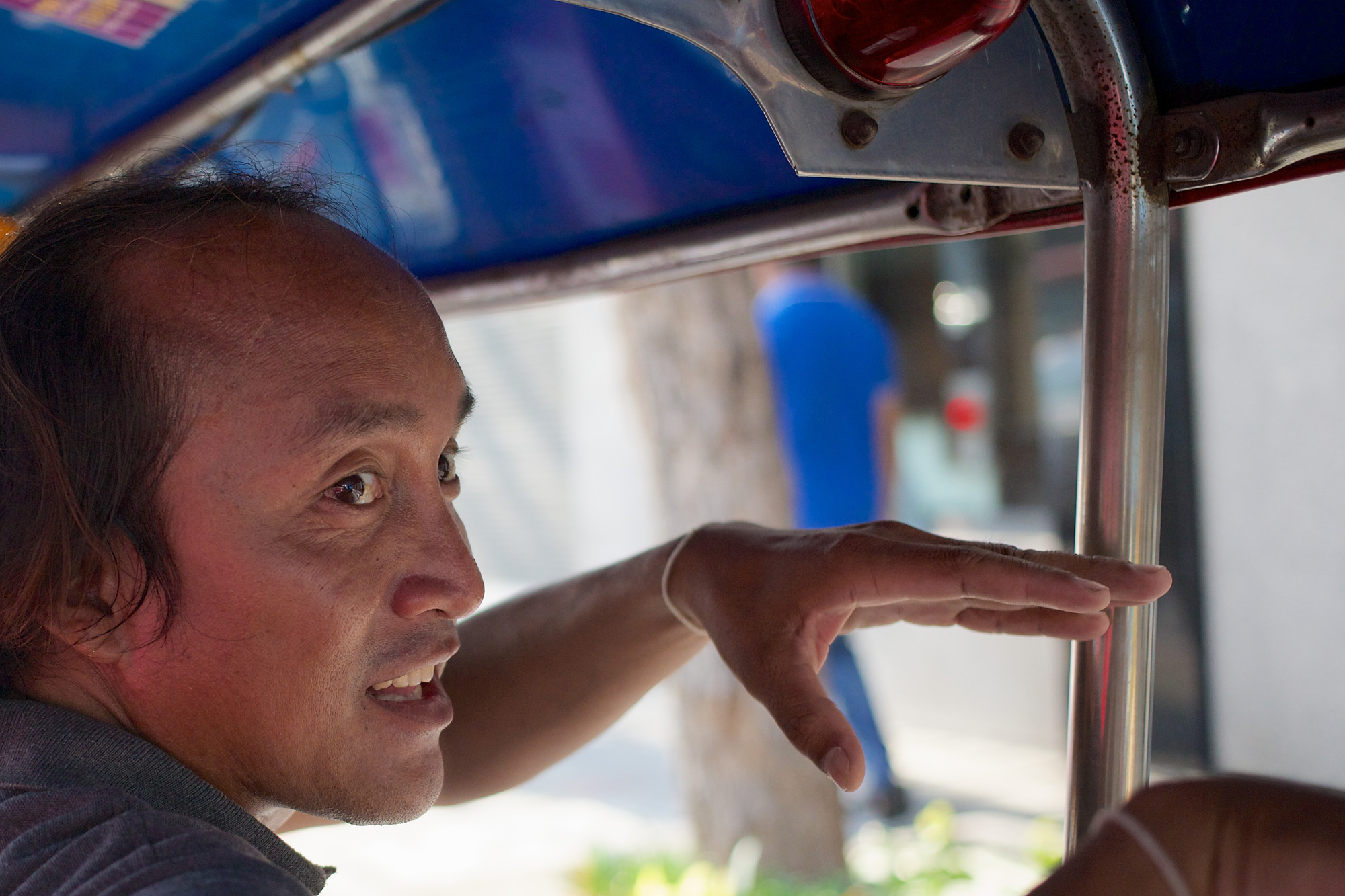For every street photo of a person laughing I can find a dozen more in which the subjects are straight-faced or downright miserable. I reckon that’s about the right proportion. I wouldn’t have it any other way.
Just imagine the absurdity of a world in which everyone walked around laughing their heads off all the time. It just wouldn’t feel right.
There’s too much misery in the modern world — and too much news about it — for laughter to occur with greater frequency in public. Yet when it appears spontaneously between friends who are sharing a private joke (as in my image below) it can bring joy to everyone who sees it.
Genuine laughter signifies a moment of happiness when, despite all the odds, joy bubbles up to the surface. It’s a rare and wonderful phenomenon to see on the street — and well worth recording. As Woody Allen said: “I am thankful for laughter, except when milk comes out of my nose.”
Please note that I’ve qualified “laughter” with the adjective “genuine” — and I do so because there’s plenty of malicious laughter, cynical laughter, false laughter to be seen, both in public and private. Mocking laughter is ghastly to behold, especially when it’s captured permanently in a street photo.
The Russian novelist Fyodor Dostoyevsky made much the same point when he wrote (in “The Adolescent”): “If you wish to glimpse inside a human soul and get to know a man, don’t bother analysing his ways of being silent, of talking, of weeping, of seeing how much he is moved by noble ideas; you will get better results if you just watch him laugh. If he laughs well, he’s a good man.”
The Twin Founts of Laughter
Some people are more predisposed to laugh than others, but they can be fundamentally happy or sad. Laughter is a response to both conditions. “You have to see the funny side,” people will often say when misfortune strikes. Many of our greatest comedians have suffered from depression and quite a few have committed suicide. Laughter didn’t save them.
The philospher Friedrich Nietzsche noted: “Perhaps I know best why it is man alone who laughs; he alone suffers so deeply that he had to invent laughter.”
The science fiction writer Kurt Vonnegut put it more amusingly: “Laughter and tears are both responses to frustration and exhaustion. I myself prefer to laugh, since there is less cleaning up to do afterwards.”
I don’t think it’s the job of the street photographer to make people laugh. We’re not comedians. If we show people laughing in our photos it’s because the phenomenon makes a good photo. It tells us something about the person — and about human beings in general — that you’d never see in a posed portrait.
Laughter in the Doorway
Because laughter can be either joyful or cynical, I like to photograph it whenever I have the opportunity. The other day I was walking along a street in London when I noticed two men standing in a doorway. One of them started laughing and I took a quick shot before he noticed me.
Maybe the shutter on my DSLR is too loud, but for whatever reason the laughing man saw me, scowled, and said: “I really don’t want you to take my photo.” Frankly, I was surprised. He seemed in such a happy mood!
I apologised, then checked the image (which wasn’t that great) and deleted it in front of him. I explained that I was taking pictures of people laughing, to which his friend chipped in with: “This guy laughs at everything.” We all ended up having a good laugh about it.
It’s my guess that the laughing man in the doorway wouldn’t have passed Dostoyevsky’s test of goodness. I think he was afraid the photo would be too revealing — would tell us something about him which he’d prefer to keep hidden under the cloak of noisy laughter.
Seen But Not Heard
You see: it’s the noise of laughter that covers up any insincerity a person may be hiding. Once you remove the noise — as the photo is bound to do — all that remains is gesture and expression. From these we can detect whether the laughter is genuine or fake with much greater ease, especially in the quietness of the viewing moment.
I like that phrase “The Quietness of the Viewing Moment” but I’m tempted to erase it from this post before someone steals it for the title of a book on photography. Perhaps I should copyright it here and now with today’s date: 23 March 2017.
Yesterday
Considering its subject, I’d intended to write this article in a better mood. But after yesterday’s latest ISIS-related atrocity (the attack on the UK Parliament) I feel sombre, like most of my fellow citizens.
My final quote is from the philosopher Bertrand Russell, who said (as recorded by Alan Wood in “Bertrand Russell, the Passionate Sceptic,” 1957): “The secret of happiness is to face the fact that the world is horrible, horrible, horrible.”
Genuine laughter returns once happiness returns, but not before.

























